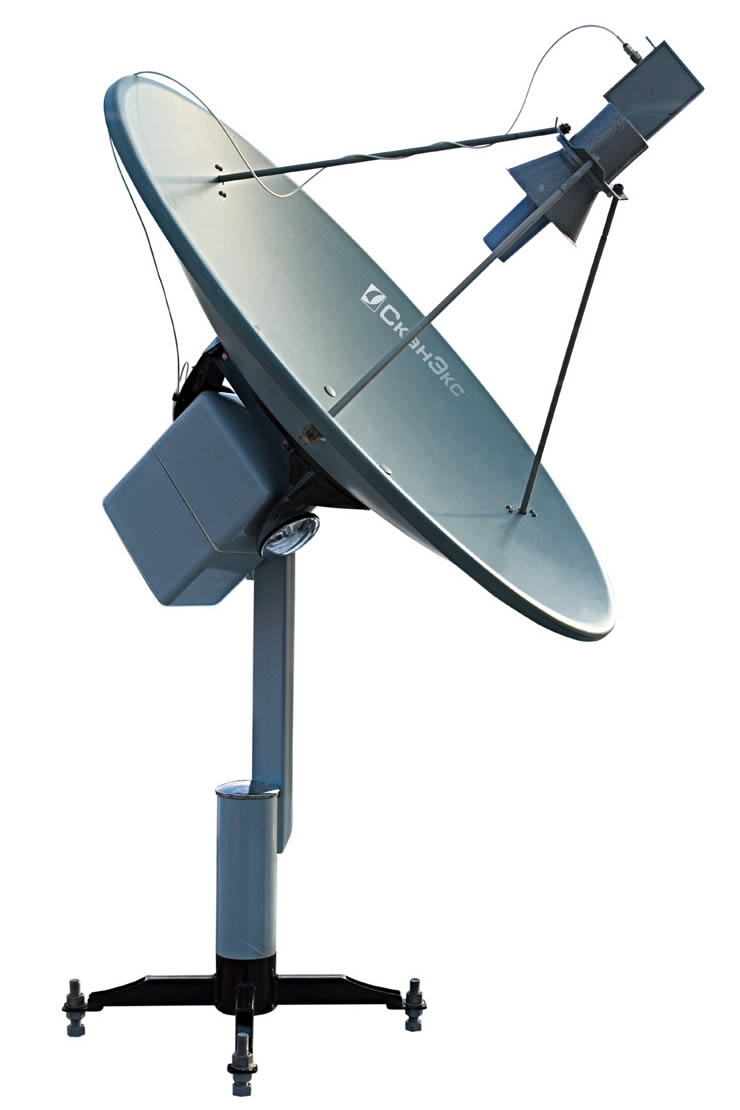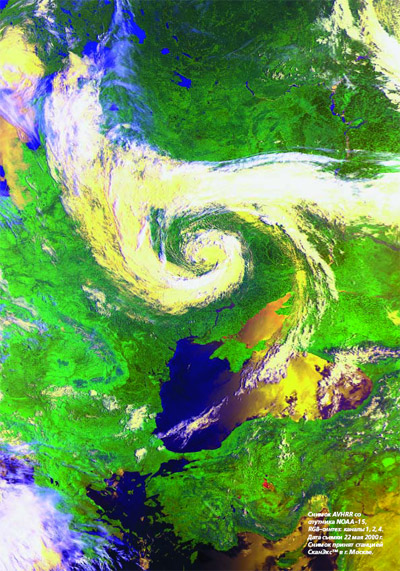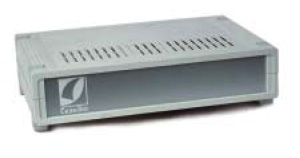Alice-SC™
Alice-SC™– ground station for remote sensing data reception in 1.7 GHz frequency
About the Station

Universal Alice-SC™ ground station is intended for receiving and processing of the imagery transmitted from polar-orbital satellites in 1.7GHz frequency.
The station provides for the RS data reception and processing from the following satellites:
- NOAA (POES)
- MetOp
- FengYun
- NPOESS (to be launched in 2013)
Station Specifications:
| Parameter | Alice-SC™ |
|---|---|
| Antenna type | axially symmetric solid reflector |
| Type of positioner | 2-axis (X-Y) |
| Antenna tracking control | step-type |
| Antenna reflector diameter, m | 1.2 |
| Polarisation | right circular |
| Working frequency band, MHz | 1,670 … 1,710 |
| Digital data rate, Mbps | from 0.5 to 8.0 |
| Modulation type | BPSK, QRSK |
| Noise temperature of the low-noise amplifier-converter, K | 65 |
| Rotation range for tilt (Y), deg. | -80…+90 |
| Rotation range for elevation (X), deg. | 0 … 170 |
| Max rotating velocity for elevation (not less than), deg./sec | 2 |
| Max rotating velocity for tilt (not less than), deg./sec | 2 |
| Dynamic tracking error (not more than), deg. | 2 |
| Antenna system weight (not more than), kg | 40 |
| Antenna system working temperature range, C | - 40 … +50 |
| Wind speed, m/s: - working - survival | 20 30 |
| Primary power supply requirements | 220 V, 50/60 Hz, single phase |
| Maximum consumed power, V*A | 300 |
| Bit error probability at any satellite elevation over 5 deg. | 10^-6 |
Samples:



Applications:
- hydrology, meteorology and weather forecast;
- agriculture;
- monitoring of forest fires and floods;
- monitoring of sea ice and dynamics of snow cover;
- education.
Components:
- the antenna system;
- the receiving unit with universal demodulator;
- the computer interface board;
- a set of connecting cables;
- the software;
- documentation.
Note: personal computer is not part of the standard Alice-SCTM delivery configuration.
Alice-SC™ installation requirements
To assure the best footprint, the horizon for the antenna system should be open from 5 degrees of elevation upwards in all directions.

For quality reception the absence of radio interference at 1670-1710 MHz is essential (can be caused by transmitters of radio relay and troposphere communication services).
Installation site of the PC and the control unit (laboratory part of the systems) depends on the connecting cables length (maximum 50 m) and how they are laid towards the antenna.

